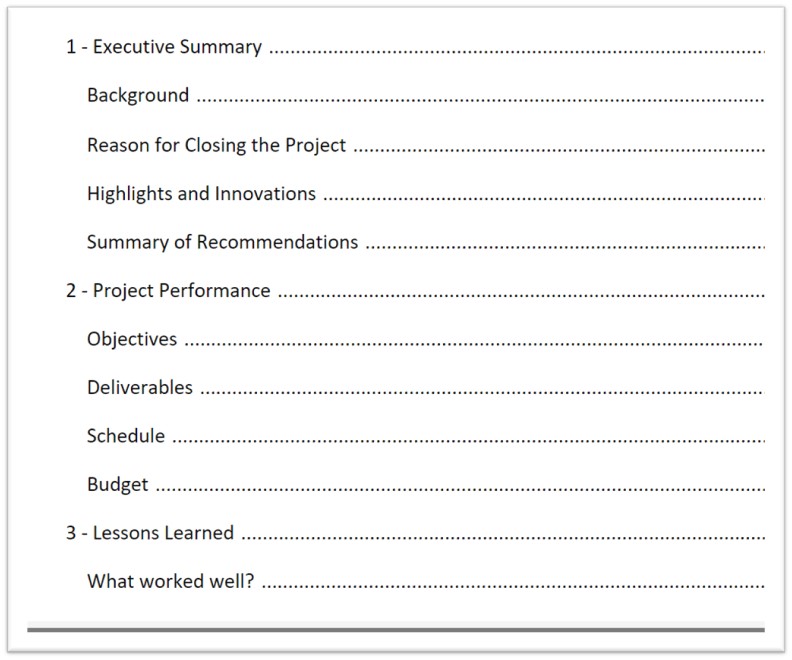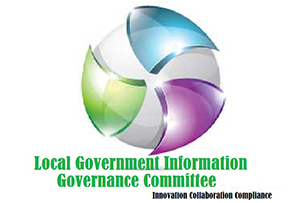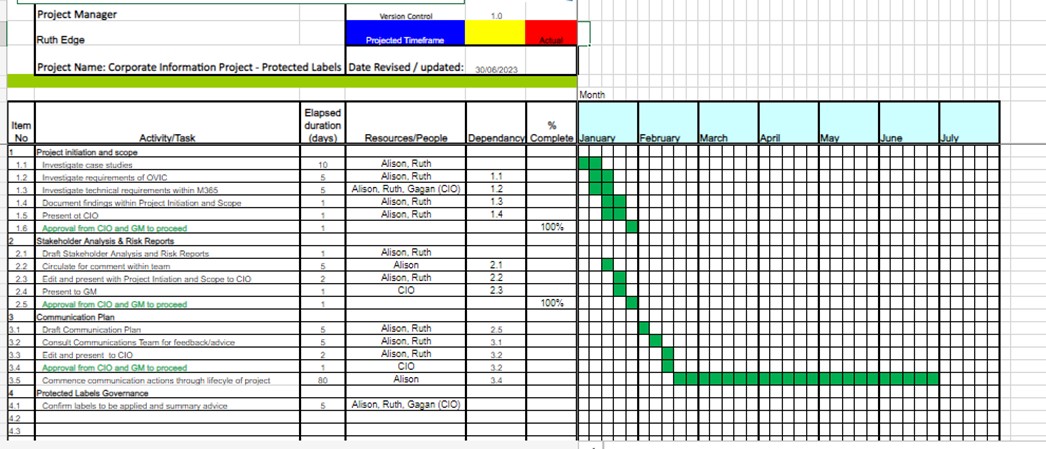Managing a records and information management service means you have many tasks, activities and long and short term projects. In a smaller organisation you may be able to manage these on the fly as they come up, or maybe not! It is always handy to follow the DIAGNOSE process and have project management templates ready to step you through the planning of what you need to do, organise resources you need to achieve your goal and properly time your project to ensure it does not conflict with other tasks you need to achieve day to day. Otherwise, projects are something that are often left until they hit you in the face, and you have to act. It is always good to get a sponsor from above, to ensure you are supported and do not have issues flying in from left field that you are alone to resolve.
I like to start with DIAGNOSE before I begin any project or act on a blossoming idea. DIAGNOSE and ADKAR are similar principles to manage problem solving and are used in business analysis to manage process change.
DIAGNOSE stands for:
- Define the issues
- Collect Information
- Analyse causes
- Generate solutions
- Implement New processes
- Check Outcomes
- Sustain the Effort
Many councils have asked how to approach applying sensitivity labels. In Cardinia we decided to use the DIAGNOSE method to prepare and then use our project management templates to control the work that we needed to deliver. This approach has been used for many projects, short and long time framed. By project, I mean an activity that has an end date.
The DIAGNOSE approach is used to assess and plan before we start the project. We also refer back to it to analyse and address obstacles, uncertainty, and matters that come from left field.
Our project templates support us to break the project planning into bite sized and manageable pieces. They also ensure that we consider all aspects of planning for and achieving a good outcome from our project. To begin we start with preparing the Project Initiation Report. This ensures we have support for our project. We do not proceed until this is approved.
Once this has been approved we move into action.
-
- Project Scope
- Stakeholder Analysis
- Risk Analysis
- Communication Plan
These are prepared together. Once completed and signed off we then begin to work through the Resource and Project Plan.
5. Resource and Project Plan
This documents our Milestones to be achieved, each phase of the project, resources required to deliver each element of the project with timing and dependencies. This way we can map performance and be prepared with contingencies if something, such as resource unavailability, or hold up from external stakeholders, affect our project timeline.
Complimenting each phase of the project, it is a good practice to keep your sponsor and key stakeholders informed on your project status. They are invested and will want to know how you are progressing. We do this by using another template. The templates standardise our brand as Information Services, and they promote us as consistent in our approach to providing services. They are also a great help as they support us to streamline activities and prompt us to report on what is relevant to our stakeholders. These are called Status Reports or Gateway Reports.
1.1 Status Report
1.2 Gateway Report
1.3 Handover Report
7. Handover / Closeout Report.
Once our implementation is completed we deliver the Handover Report to those who will maintain our project outcomes. We have implemented the Sensitivity Labels into the SharePoint and Office environment, we have delivered a training program to all users that must be maintained as staff leave and are onboarded into the organisation. We must ensure that monitoring is managed and reported to ensure the integrity of the labelling is maintained.
Our final Closeout Report documents our learnings, and provides recommendations for keeping the results of our project successfully maintained into the future. This documentation is important because it maintains the story of why the implementation of Sensitivity Labels was needed, who was involved in decision making and implementation, who is responsible for maintaining them into the future. It informs actions needed to upkeep the effectiveness and reliability of function throughout the information lifecycle.
If you would like to know more about managing your records and information management projects using project management techniques and templates request training through the MAV LGIG committee.
By Ruth Edge
Cardinia Shire Council
14 March 2023


